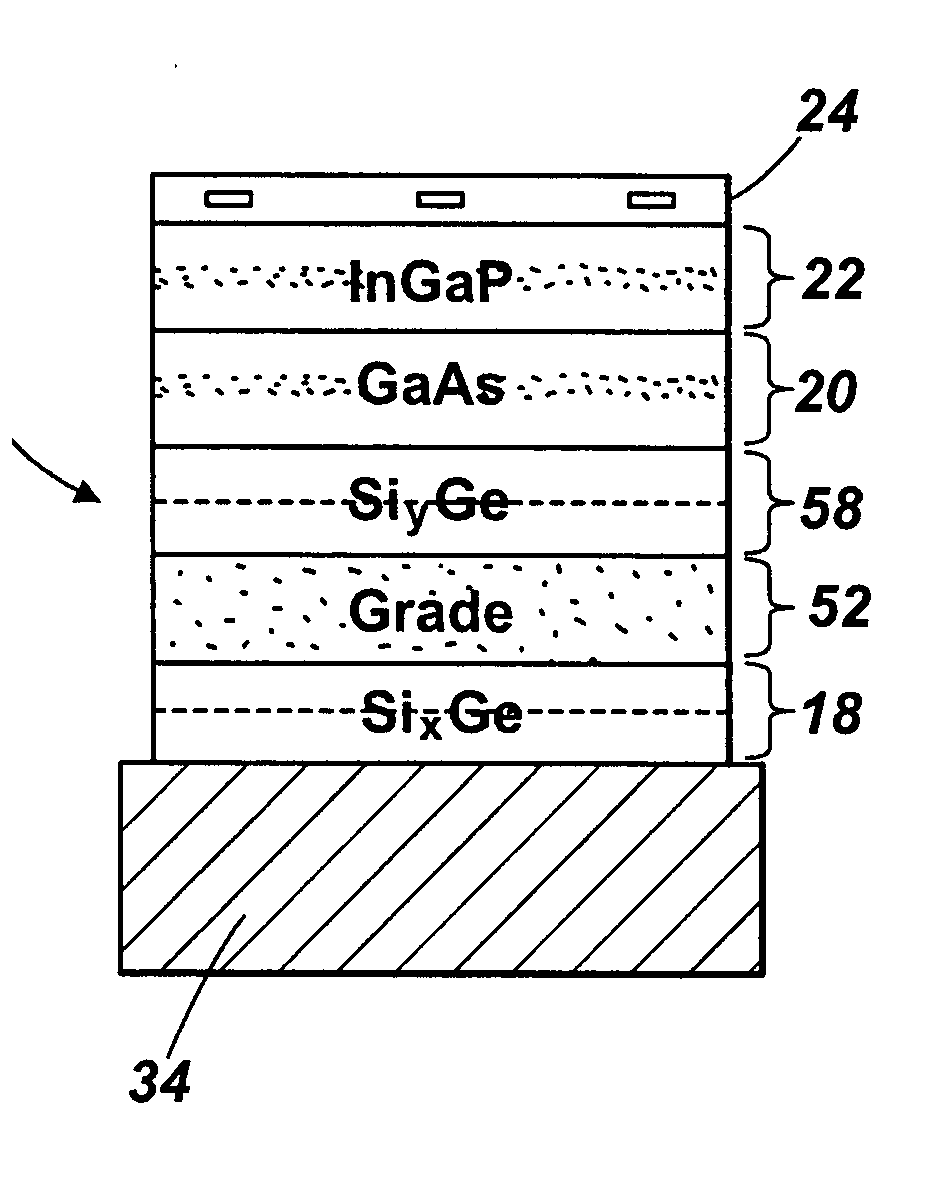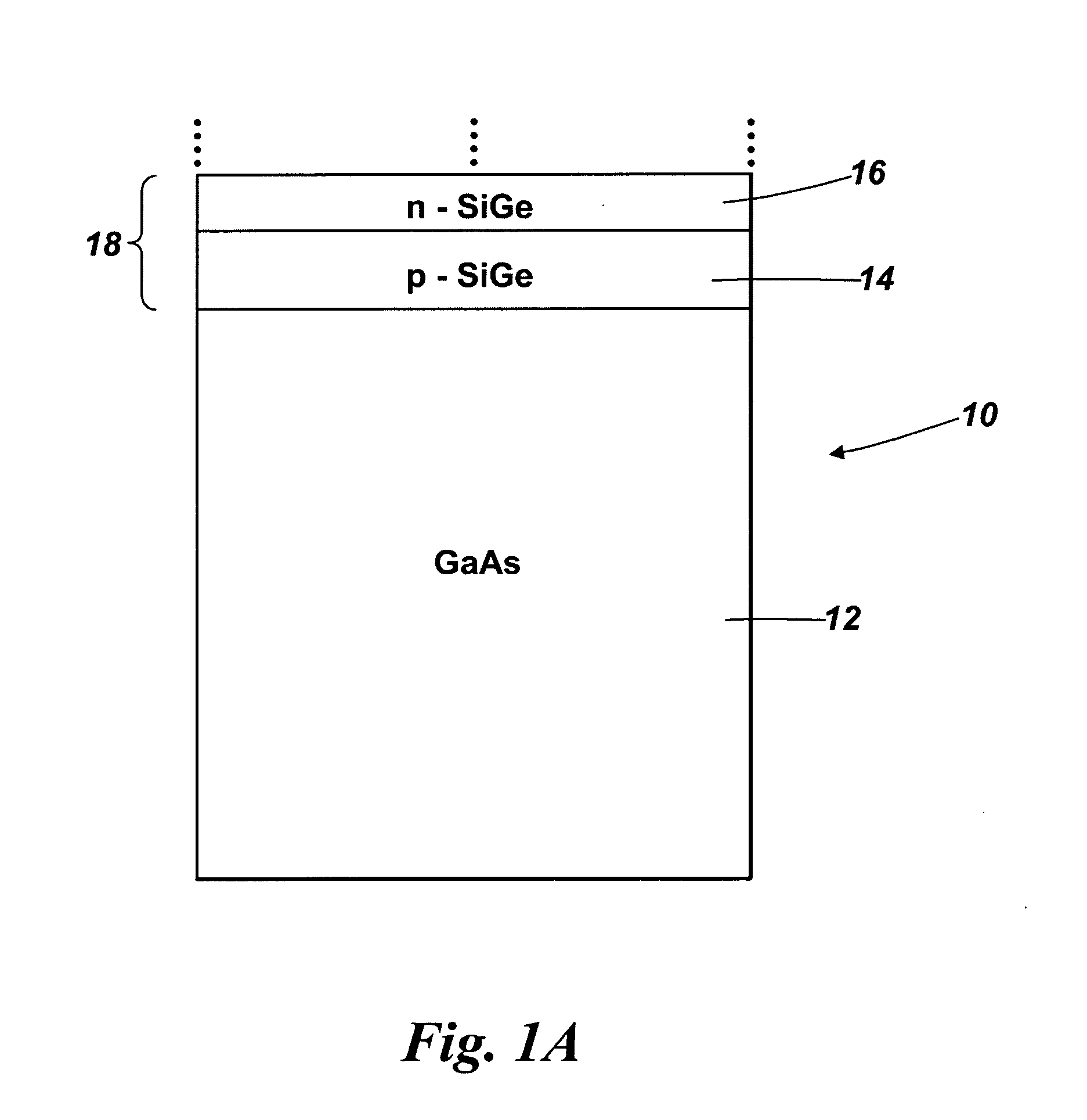Photovoltaic cell
a photovoltaic cell and photovoltaic technology, applied in the direction of photovoltaic energy generation, basic electric elements, electrical equipment, etc., can solve the problems of poor material quality, difficult to accurately control the thickness of the n-doped layer, and much lower efficiency solar cells as photo-generated charge carriers recombine more readily within the device. achieve the effect of better thermal transfer characteristics
- Summary
- Abstract
- Description
- Claims
- Application Information
AI Technical Summary
Benefits of technology
Problems solved by technology
Method used
Image
Examples
Embodiment Construction
[0033]Referring to FIG. 1A there is shown schematically a photovoltaic cell structure 10 according to a first embodiment of the invention. The structure 10 comprises a GaAs substrate 12. On the GaAs substrate are two successive first layers 14, 16 of a SiGe material grown epitaxially on and monolithically with the GaAs substrate, and these layers together form a first germanium based photovoltaic junction 18. The first layers of SiGe have a silicon content selected so as to be substantially lattice matched to the GaAs substrate. To achieve this the silicon fraction x for SixGe1-x could lie in the range of 0˜0.04, more preferably 0.01˜0.03 and more preferably still about 0.016˜0.02. To form a practical photovoltaic junction the lower SiGe layer may typically be p-doped to a concentration of about 5×1016 to 5×1019 cm−3 and have a thickness of about 1˜2 μm. The upper SiGe layer may typically be n-doped to a concentration of about 1×1017 cm−3 and have a thickness of about 0.2˜1 μm.
[0034...
PUM
 Login to View More
Login to View More Abstract
Description
Claims
Application Information
 Login to View More
Login to View More - R&D
- Intellectual Property
- Life Sciences
- Materials
- Tech Scout
- Unparalleled Data Quality
- Higher Quality Content
- 60% Fewer Hallucinations
Browse by: Latest US Patents, China's latest patents, Technical Efficacy Thesaurus, Application Domain, Technology Topic, Popular Technical Reports.
© 2025 PatSnap. All rights reserved.Legal|Privacy policy|Modern Slavery Act Transparency Statement|Sitemap|About US| Contact US: help@patsnap.com



